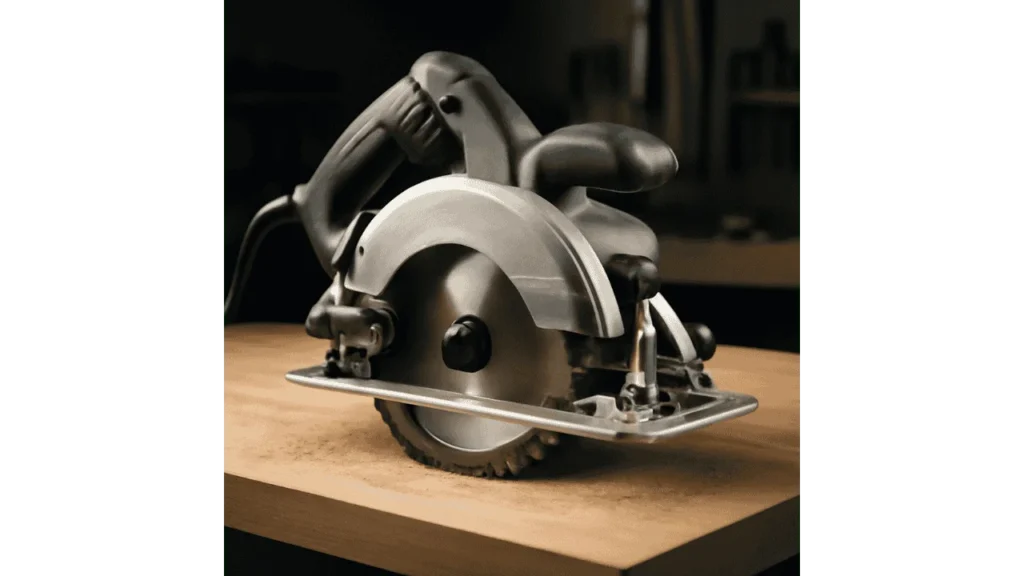The circular saw has become an indispensable tool in woodworking and construction, transforming the speed and precision of cutting materials. Its development over the years has made it essential for both professionals and DIY enthusiasts. However, the history of this tool is often debated, with multiple inventors and innovators contributing to its design and refinement. Let’s explore the evolution of the circular saw, its key inventors, and how this tool has shaped the woodworking industry.

Early Concepts and Predecessors
Windmill-Powered Saws in 16th–17th Century Europe
Circular saws first appeared in the 16th and 17th centuries in Europe, powered by windmills. These early saws were used to cut timber, an essential resource during the Renaissance. Powered by wind, the circular blade allowed workers to cut large quantities of wood more efficiently than before. While rudimentary, these windmill-powered saws laid the groundwork for future developments in sawmill technology.
Samuel Miller’s 1777 Patent
In 1777, Samuel Miller received a patent for a windmill-powered saw. While Miller’s patent focused on the windmill mechanism, it did not provide a detailed description of the circular saw’s blade mechanism. However, it marked a significant step in mechanizing timber production and contributed to the development of circular saws.
“While my patent didn’t include the blade design, it set the groundwork for further mechanical developments.” – Samuel Miller, Inventor
Related: What is a Circular Saw?
Tabitha Babbitt: The Shaker Innovator
Observations Leading to Innovation
Tabitha Babbitt, a member of the Shaker community, is often credited with inventing the first true circular saw in the late 18th century. She noticed the inefficiencies of the traditional two-man pit saw, which required one person to push and the other to pull the saw. Inspired by the mechanics of spinning wheels, Babbitt designed a circular blade that allowed for continuous cutting with minimal effort, leading to the creation of the circular saw.
Development of the Circular Saw
Babbitt’s design revolutionized the way wood was cut in the Shaker sawmills. While no formal patent was filed due to the communal nature of Shaker inventions, her design became widely used and significantly improved timber cutting. The simplicity and efficiency of Babbitt’s invention laid the foundation for the modern circular saw, though her contributions often went unrecognized in official historical accounts.
“I observed the two-man pit saw and thought, why not make a saw that cuts continuously, as a spinning wheel does?” – Tabitha Babbitt, Inventor
The Evolution of the Circular Saw
Advancements in the 19th Century
The 19th century brought significant improvements to sawmill machinery, particularly with the rise of steam-powered technology. Circular saws replaced older, manual cutting methods, enabling large-scale lumber production. These innovations allowed sawmills to operate more efficiently, processing greater amounts of timber with much higher precision.
Edmond Michel and the Portable Circular Saw
The introduction of the portable electric circular saw in 1923 was a major milestone in the evolution of the tool. Edmond Michel, the inventor behind this breakthrough, created a saw that could be used on-site, giving workers the flexibility to cut materials anywhere. Michel founded the Michel Electric Handsaw Company, which later became known as Skil, a name now synonymous with portable circular saws.
“Portable saws have made work faster and more efficient, allowing workers to cut on site instead of hauling timber to a sawmill.” – Edmond Michel, Inventor
You Might Also Like: How to Cut Straight With a Circular Saw?
Frequently Asked Questions (FAQs)
Q1: Who is credited with inventing the circular saw?
A: The invention of the circular saw is attributed to several individuals over time. Early concepts include windmill-powered saws in 16th–17th century Europe. Samuel Miller received a patent in 1777 for a saw windmill, which incorporated a circular saw mechanism. However, it was Tabitha Babbitt, a Shaker woman in the early 19th century, who is often credited with inventing the first functional circular saw for use in a sawmill. Later, Edmond Michel developed the first portable electric circular saw in 1923.
Q2: What was Tabitha Babbitt’s contribution to the circular saw?
A: Tabitha Babbitt observed the inefficiencies of traditional two-man pit saws and designed a circular saw blade powered by a spinning wheel. This innovation allowed for continuous cutting without the need for a return stroke, significantly improving efficiency in sawmills.
Q3: How did Edmond Michel’s invention impact the circular saw?
A: Edmond Michel’s development of the portable electric circular saw in 1923 revolutionized woodworking by making the tool more accessible and versatile. His invention led to the founding of the Michel Electric Handsaw Company, later renamed Skil, which became a leading manufacturer of power tools.
Q4: Were there any other early inventors of the circular saw?
A: Yes, there were other early inventors and innovators. For instance, Samuel Miller patented a saw windmill in 1777 that included a circular saw mechanism. Additionally, windmill-powered saws were used in Europe during the 16th and 17th centuries for timber cutting.
Final Takeaways
The history of the circular saw is a testament to the many contributions from key inventors and the iterative nature of technological advancement. From the windmill-powered saws of the Renaissance to the electric portable saws of the 20th century, the circular saw has evolved through many stages, shaping modern woodworking and construction. Today, the circular saw remains a vital tool, thanks to the innovations made by Samuel Miller, Tabitha Babbitt, Edmond Michel, and countless others.
- How to Cut a Straight Line with a Jigsaw? - October 31, 2025
- How to Cut a Circle with a Jigsaw? - October 31, 2025
- Can You Cut Acrylic with a Jigsaw? - October 31, 2025
